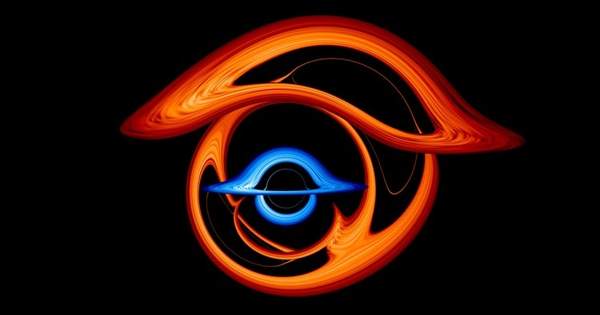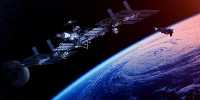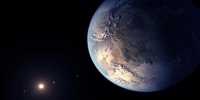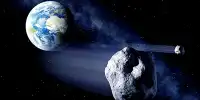In a new NASA visualization, a pair of black holes millions of times the mass of the Sun perform a hypnotic pas de deux. The film depicts how black holes distort and redirect light emitted by the maelstrom of hot gas that surrounds each one, known as an accretion disk.
When viewed from near the orbital plane, each accretion disk has a distinctive double-humped appearance. However, as one passes in front of the other, the gravity of the foreground black hole transforms its companion into a rapidly changing series of arcs. Light from both disks navigates the tangled fabric of space and time near the black holes, causing these distortions.
“We’re seeing two supermassive black holes, one with 200 million solar masses and one with half that,” said Jeremy Schnittman, an astrophysicist at NASA’s Goddard Space Flight Center in Greenbelt, Maryland, who created the visualization. “These are the kinds of black hole binary systems in which we believe both members could sustain accretion disks for millions of years.”
A pair of orbiting black holes millions of times the Sun’s mass perform a hypnotic pas de deux in a new NASA visualization. The movie traces how the black holes distort and redirect light emanating from the maelstrom of hot gas – called an accretion disk – that surrounds each one.
The accretion disks are colored differently, red and blue, to make tracking the light sources easier, but the choice also reflects reality. Hotter gas emits light closer to the blue end of the spectrum, and material orbiting smaller black holes is subjected to stronger gravitational effects, resulting in higher temperatures. Both accretion disks would actually emit the majority of their light in the UV for these masses, with the blue disk reaching a slightly higher temperature.
Visualizations like this one assist scientists in visualizing the fascinating effects of extreme gravity’s funhouse mirror. The new video expands on an earlier one Schnittman created, which showed a single black hole from various angles.
The accretion disks appear noticeably brighter on one side when viewed nearly edgewise. The warped image is produced by gravitational distortion, which alters the paths of light coming from different parts of the disks. The rapid motion of gas near the black hole alters the luminosity of the disk via a phenomenon known as Doppler boosting, an effect of Einstein’s relativity theory that brightens the side rotating toward the viewer and dims the side spinning away.
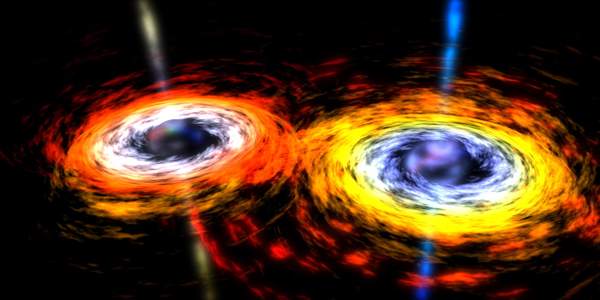
The animation also depicts a more subtle phenomenon known as a relativistic aberration. The black holes get smaller as they get closer to the viewer and bigger as they get further away.
When viewed from above, these effects vanish, but new features emerge. In each orbit, both black holes generate small images of their partners that circle around them. When you look closely, you can see that these are edge-on views. To create them, light from black holes must be redirected by 90 degrees, which means we’re looking at the black holes from two different perspectives at the same time: face on and edge-on.
“The self-similar nature of the images produced by gravitational lensing is a striking aspect of this new visualization,” Schnittman explained. “Zooming into each black hole reveals a series of increasingly distorted images of its companion.”
Schnittman created the visualization by computing the path that light rays from accretion disks took as they traveled through the warped space-time around the black holes. The calculations required to create the movie frames would have taken about a decade on a modern desktop computer.
So Schnittman collaborated with Goddard data scientist Brian P. Powell to use the NASA Center for Climate Simulation’s Discover supercomputer. These computations took about a day and used only 2% of Discover’s 129,000 processors.
Astronomers anticipate that in the not-too-distant future, they will be able to detect gravitational waves (space-time ripples) produced when two supermassive black holes in a system similar to the one depicted by Schnittman spiral together and merge.
